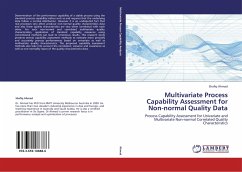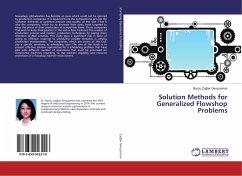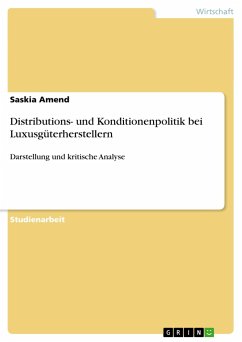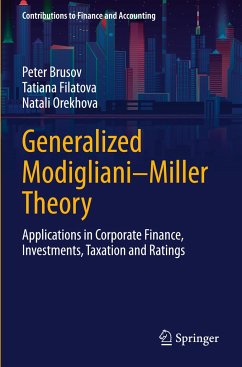
Calibration of Multivariate Generalized Hyperbolic Distributions
Applications in Risk Management, Portfolio optimization, and Portfolio Credit Risk
Versandkostenfrei!
Versandfertig in 6-10 Tagen
32,99 €
inkl. MwSt.

PAYBACK Punkte
16 °P sammeln!
The distributions of many financial quantities arewell-known to have heavy tails, exhibit skewness. We study an especially promising family: multivariate generalized hyperbolic distributions(GH). This family includes Gaussian and Student t distributions, and the so-called skewed t distributions. We describe a way to stably calibrate GH distributions for a wider range ofparameters than has previously been reported.We apply GH distributions in three financialapplications. First, we forecast the VaR for stockindex returns, and show that the GH distributionsoutperform the Gaussian distribution. Se...
The distributions of many financial quantities are
well-known to have heavy tails, exhibit skewness. We
study an especially promising family: multivariate
generalized hyperbolic distributions(GH). This
family includes Gaussian and Student t
distributions, and the so-called skewed t
distributions. We describe a way to stably
calibrate GH distributions for a wider range of
parameters than has previously been reported.
We apply GH distributions in three financial
applications. First, we forecast the VaR for stock
index returns, and show that the GH distributions
outperform the Gaussian distribution. Second, we
calculate an efficient frontier for equity portfolio
optimization under the skewed-t distribution and we
show that the Gaussian efficient frontier is actually
unreachable. Third, we build an intensity-based model
to price Basket Credit Default Swaps by calibrating
the skewed t distribution directly, without the need
to separately calibrate the skewed t copula.
This book is useful to academic research of GH
distributions for both theory and calibration. It is
also useful to quantitative finance analysts and
numeric algorithm developers.
well-known to have heavy tails, exhibit skewness. We
study an especially promising family: multivariate
generalized hyperbolic distributions(GH). This
family includes Gaussian and Student t
distributions, and the so-called skewed t
distributions. We describe a way to stably
calibrate GH distributions for a wider range of
parameters than has previously been reported.
We apply GH distributions in three financial
applications. First, we forecast the VaR for stock
index returns, and show that the GH distributions
outperform the Gaussian distribution. Second, we
calculate an efficient frontier for equity portfolio
optimization under the skewed-t distribution and we
show that the Gaussian efficient frontier is actually
unreachable. Third, we build an intensity-based model
to price Basket Credit Default Swaps by calibrating
the skewed t distribution directly, without the need
to separately calibrate the skewed t copula.
This book is useful to academic research of GH
distributions for both theory and calibration. It is
also useful to quantitative finance analysts and
numeric algorithm developers.












